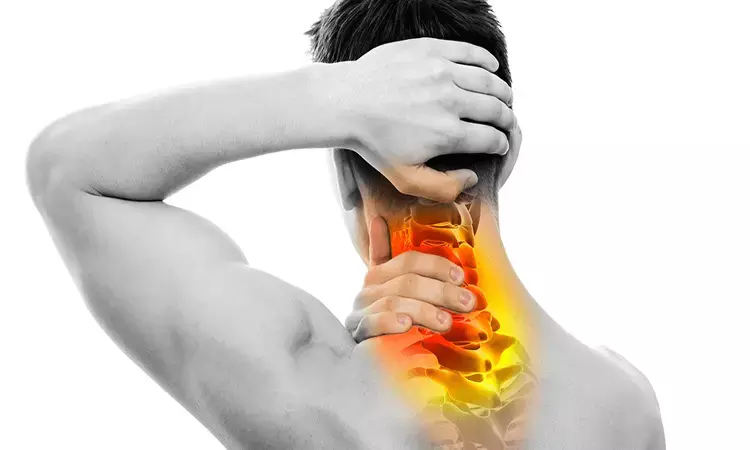- Home
- Medical news & Guidelines
- Anesthesiology
- Cardiology and CTVS
- Critical Care
- Dentistry
- Dermatology
- Diabetes and Endocrinology
- ENT
- Gastroenterology
- Medicine
- Nephrology
- Neurology
- Obstretics-Gynaecology
- Oncology
- Ophthalmology
- Orthopaedics
- Pediatrics-Neonatology
- Psychiatry
- Pulmonology
- Radiology
- Surgery
- Urology
- Laboratory Medicine
- Diet
- Nursing
- Paramedical
- Physiotherapy
- Health news
- Fact Check
- Bone Health Fact Check
- Brain Health Fact Check
- Cancer Related Fact Check
- Child Care Fact Check
- Dental and oral health fact check
- Diabetes and metabolic health fact check
- Diet and Nutrition Fact Check
- Eye and ENT Care Fact Check
- Fitness fact check
- Gut health fact check
- Heart health fact check
- Kidney health fact check
- Medical education fact check
- Men's health fact check
- Respiratory fact check
- Skin and hair care fact check
- Vaccine and Immunization fact check
- Women's health fact check
- AYUSH
- State News
- Andaman and Nicobar Islands
- Andhra Pradesh
- Arunachal Pradesh
- Assam
- Bihar
- Chandigarh
- Chattisgarh
- Dadra and Nagar Haveli
- Daman and Diu
- Delhi
- Goa
- Gujarat
- Haryana
- Himachal Pradesh
- Jammu & Kashmir
- Jharkhand
- Karnataka
- Kerala
- Ladakh
- Lakshadweep
- Madhya Pradesh
- Maharashtra
- Manipur
- Meghalaya
- Mizoram
- Nagaland
- Odisha
- Puducherry
- Punjab
- Rajasthan
- Sikkim
- Tamil Nadu
- Telangana
- Tripura
- Uttar Pradesh
- Uttrakhand
- West Bengal
- Medical Education
- Industry
Neck pain with Migraine does not always indicate musculoskeletal dysfunction: Study

Neck pain with or without any cervical origin is yet the most common symptom in people suffering from migraine.
A recent study by Zhiqi Liang MPhty, has revealed that how cervical musculoskeletal dysfunction is always not the cause of pain in people suffering from migraine. The study has been published in the journal of head and face pain.
The objective of the study was to identify incidence of the neck pain associated with migraine presenting with a pattern of cervical musculoskeletal dysfunction similar to cervical musculoskeletal disorders, and to determine if pain hypersensitivity impacts on cervical musculoskeletal function in people with migraine.
The researchers conducted a cross-sectional, single-blinded study in a research laboratory at the University of Queensland, Australia. People with migraine a total of 124: 106 with episodic migraine, 18 with chronic migraine, 32 healthy controls and 21 people with idiopathic neck pain were assessed using a set of measures typically used in the assessment of a cervical musculoskeletal disorder, including cervical movement range and accuracy, segmental joint dysfunction, neuromuscular and sensorimotor measures. Pain hypersensitivity was assessed using pressure pain thresholds and the Allodynia Symptom Checklist. People with migraine with diagnosis of comorbid neck disorders were excluded. Cluster analysis was performed to identify how participants grouped on the basis of their performance across cervical musculoskeletal assessments. Post hoc analyses examined the effects of pain hypersensitivity on musculoskeletal function, and if any symptoms experienced during testing were related to musculoskeletal function.
The researchers found that the two distinct clusters of cervical musculoskeletal function were found: (i) neck function similar to healthy controls (n = 108) and (ii) neck dysfunction similar to persons with neck pain disorders (n = 69). Seventy-six of the individuals with migraine (62 with neck pain and 14 without neck pain) were clustered as having normal cervical musculoskeletal function, whereas the remaining 48 with neck pain had cervical dysfunction comparable with a neck disorder. Musculoskeletal dysfunction was not related to pain hypersensitivity or symptoms experienced during testing.
The researchers concluded that "Neck pain when present with migraine does not necessarily indicate the existence of cervical musculoskeletal dysfunction. Skilled assessment without reliance only on the person reporting symptoms is needed to identify actual cervical dysfunction. Treatments suitable for neck musculoskeletal disorders would seem inappropriate for the individuals without cervical dysfunction. Future studies evaluating any potential effects of such treatments should only select participants with neck pain of cervical origin."
For further information: https://doi.org/10.1111/head.14136.
Medical Dialogues consists of a team of passionate medical/scientific writers, led by doctors and healthcare researchers. Our team efforts to bring you updated and timely news about the important happenings of the medical and healthcare sector. Our editorial team can be reached at editorial@medicaldialogues.in.


